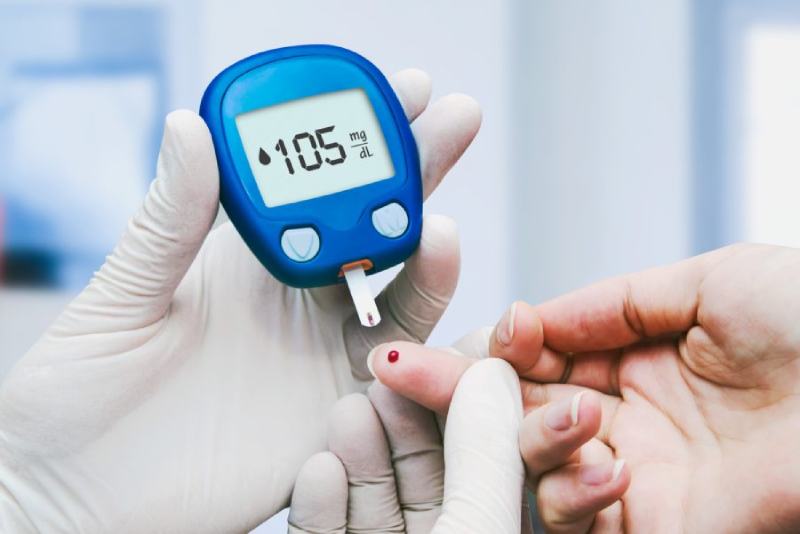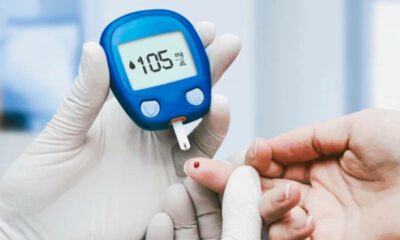For millions of people worldwide living with diabetes, managing blood sugar levels is a constant pursuit. This journey relies on a variety of tools, and among them, a seemingly simple strip plays a vital role: the diabetes test strip. Often referred to as “streifen” in German, signifying a small, narrow piece of material, these test strips hold immense power in the world of diabetes management.
This article delves into the world of diabetes test strips, exploring their:
- Function and Importance: Understand how test strips work and their significance in blood sugar monitoring.
- Types of Test Strips: Discover the different varieties of test strips available and their functionalities.
- Using Test Strips Effectively: Learn proper techniques for accurate blood sugar measurement.
- Interpreting Test Results: Understand what your blood sugar readings mean and how to act accordingly.
- Choosing the Right Test Strips: Explore factors to consider when selecting test strips for your needs.
- Beyond Blood Sugar: Exploring Advanced Test Strips: Discover the potential of test strips for measuring additional parameters.
- The Future of Test Strips: Explore advancements and innovations in test strip technology.
The Power of a Tiny Strip: Blood Sugar Monitoring Made Simple
Diabetes test strips are small, disposable pieces of plastic coated with specific enzymes or chemicals. When a drop of blood is placed on the designated area of the strip, it reacts with the coating, generating an electrical current. This current is then measured by a blood glucose meter, translating it into a blood sugar reading displayed on the meter’s screen.
Blood sugar monitoring is crucial for effective diabetes management. It allows individuals to:
- Track Blood Sugar Trends: Regular testing helps identify patterns in blood sugar levels throughout the day and in response to meals, exercise, and other factors.
- Make Informed Decisions: Based on blood sugar readings, individuals can adjust insulin doses, meal plans, or activity levels to maintain optimal blood sugar control.
- Identify Potential Issues: Regular testing can help detect hyperglycemia (high blood sugar) or hypoglycemia (low blood sugar) early on, allowing for prompt intervention.
A World of Streifen: Exploring Different Types of Test Strips
The world of diabetes test strips isn’t one-size-fits-all. Here’s a look at some common types:
- Basic Test Strips: These strips measure blood sugar levels only.
- Coding Strips: These strips require coding with a specific meter model for accurate readings.
- No-Coding Strips: These strips automatically work with compatible meters, eliminating the need for manual coding.
- Blood Ketone Test Strips: These strips measure blood ketone levels, which can be helpful for individuals with Type 1 diabetes to monitor for potential diabetic ketoacidosis (DKA).
- Continuous Glucose Monitoring (CGM) Sensors: While not technically test strips, these small sensors are inserted under the skin and continuously monitor blood sugar levels, transmitting data wirelessly to a receiver or smartphone app.
Using Test Strips Effectively: Mastering the Technique
Accurate blood sugar testing relies on proper technique:
- Handwashing: Wash your hands thoroughly with soap and warm water before testing to minimize contamination.
- Drying Your Hands: Pat your hands dry completely with a clean cloth or air-dry them to prevent diluting the blood sample.
- Lancet Use: Use a sterile lancing device to prick your finger and obtain a small blood drop.
- Applying the Blood Sample: Touch the blood drop to the designated area on the test strip as instructed by the manufacturer.
- Meter Reading: Insert the used test strip into the meter and wait for the reading to appear on the screen.
- Disposing of Test Strips and Lancets: Dispose of used test strips and lancets safely in a designated sharps container.
Following these steps ensures accurate readings and empowers you to make informed decisions about your diabetes management.
Interpreting Your Blood Sugar Results: What the Numbers Mean
Understanding what your blood sugar readings mean is crucial:
- Target Ranges: Your doctor will set specific target blood sugar ranges based on your individual health and diabetes type.
- Taking Action: If your blood sugar falls below or exceeds your target range, take appropriate steps to adjust insulin dosage, food intake, or activity level. Always consult your doctor for specific guidance based on your readings.
- Record Keeping: Maintain a logbook or use a diabetes management app to record your blood sugar readings, along with factors like food intake, medication dosage, and exercise. This helps identify patterns and trends for better management.
Choosing the Right Test Strips for You
With various test strips available, here are some factors to consider when making your choice:
- Compatibility: Ensure the strips are compatible with your specific blood glucose meter model.
- Insurance Coverage: Check your insurance coverage to see if specific test strips are covered.
- Cost: Test strips can vary in price. Explore options and compare costs while prioritizing accuracy and ease of use.
- Ease of Use: Consider factors like coding requirements, sample size needed, and overall user-friendliness.
- Additional Features: Some strips offer features like blood ketone testing or faster reading times. Choose features that best suit your needs.
Beyond Blood Sugar: Exploring Advanced Test Strips
- The world of test strips is constantly evolving, with potential for measuring additional parameters:
- Blood Ketone Testing: These strips, used in conjunction with basic blood sugar strips, can help individuals with Type 1 diabetes monitor for potential diabetic ketoacidosis (DKA).
- Continuous Glucose Monitoring (CGM) Sensors: While not technically strips, these sensors offer a more continuous picture of blood sugar levels. They are inserted under the skin and transmit data wirelessly to a receiver or smartphone app.
The Future of Test Strips: Innovation and Advancements
- Test strip technology is constantly evolving. Here’s a glimpse into potential future developments:
- Painless Blood Sampling: Research is ongoing for less invasive methods of blood sampling, potentially eliminating the need for finger pricking.
- Multi-Analyte Test Strips: Future strips might measure blood sugar alongside other parameters like ketones or cholesterol, providing a more comprehensive picture of health.
- Smart Test Strips: Integration with smartphone apps and telemedicine platforms could allow for real-time data analysis and personalized recommendations.
Conclusion: The Streifen’s Enduring Role in Diabetes Management
The humble diabetes test strip, the little “streifen,” plays a vital role in empowering individuals with diabetes to take charge of their health. By understanding how test strips work, using them effectively, and interpreting results accurately, individuals can make informed decisions and achieve optimal blood sugar control. With continuous advancements in technology, test strips are poised to become even more sophisticated, offering a brighter future for diabetes management.
Note: This article provides a comprehensive overview of diabetes test strips. You can consider including specific brand comparisons or discussing resources available in your region to help individuals with diabetes access affordable test strips. Additionally, you can explore personal stories of people who have benefited from using specific types of test strips to further connect with readers.

 Diabetology1 week ago
Diabetology1 week ago
 Diabetology1 week ago
Diabetology1 week ago
 Diabetology2 weeks ago
Diabetology2 weeks ago
 Diabetology2 weeks ago
Diabetology2 weeks ago
 Diabetology1 week ago
Diabetology1 week ago
 Diabetology1 week ago
Diabetology1 week ago
 Diabetology1 week ago
Diabetology1 week ago
 Diabetology2 weeks ago
Diabetology2 weeks ago












